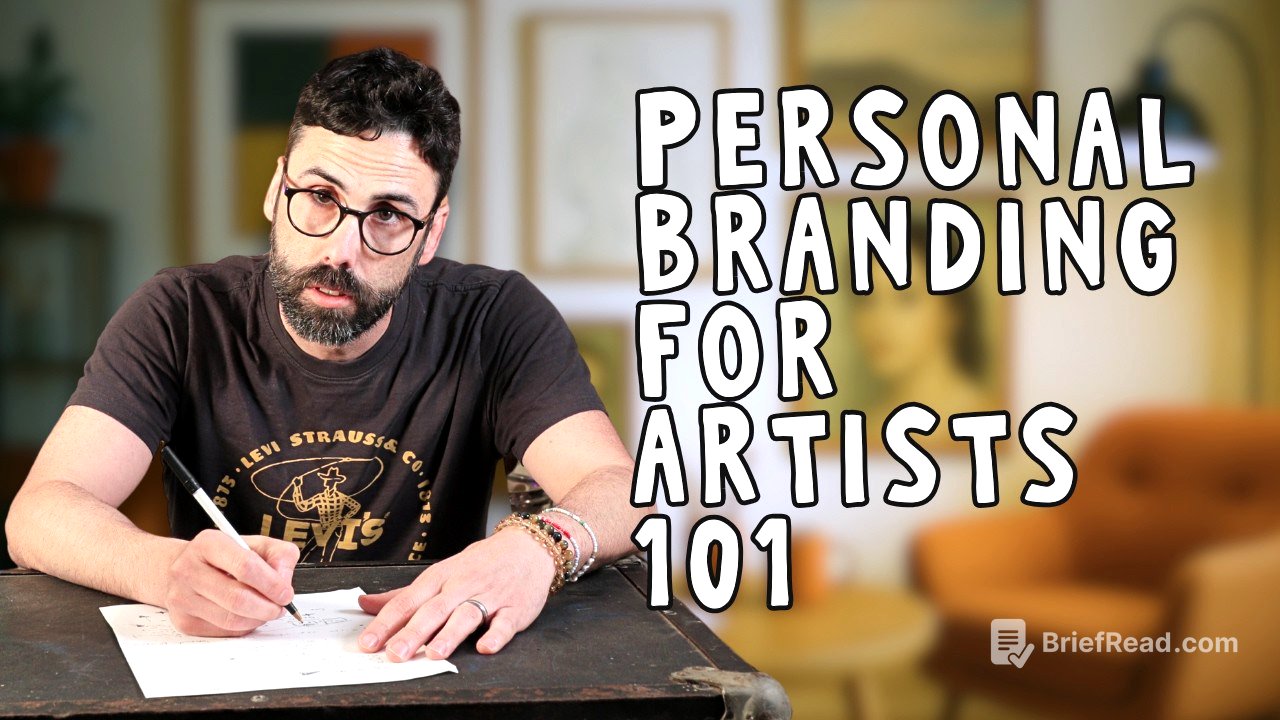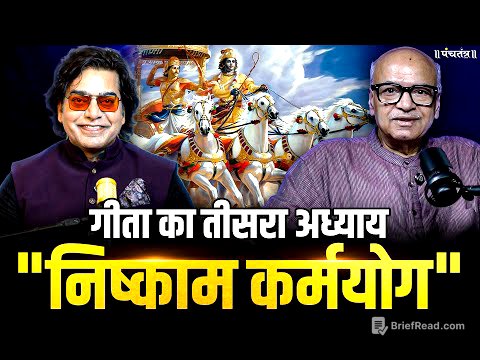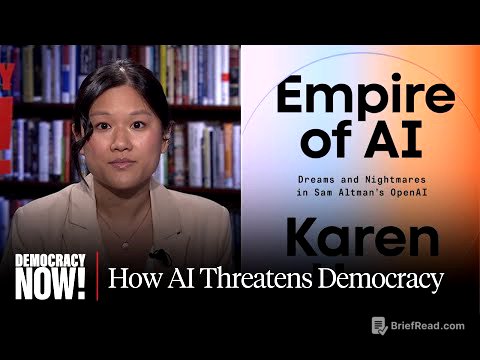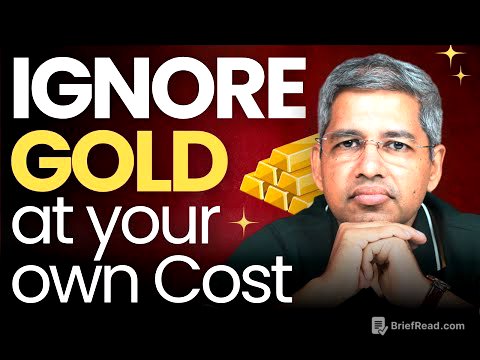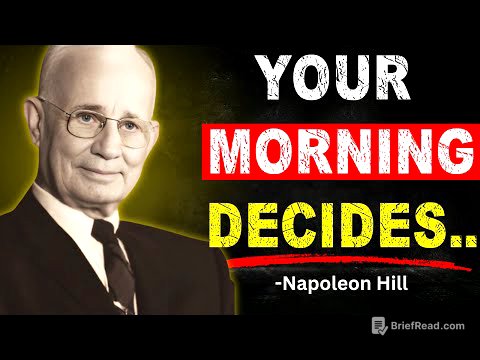TLDR;
This video explains how artists can build a personal brand online to attract their ideal buyers by focusing on influence rather than just showcasing their art. It outlines a four-step process: identifying the ideal buyer, defining a mission, sharing a personal story, and detailing how to achieve that mission through physical art, digital content, and social interactions. The video emphasizes the importance of educating, inspiring, and entertaining the audience with content that aligns with the artist's mission and values.
- Identify your ideal buyer ("Yubab").
- Define your mission beyond just making art.
- Share your personal story to connect with your audience.
- Detail how you'll achieve your mission through art, content, and social activities.
Intro [0:00]
The video introduces the concept of building a personal brand as an artist to enhance online sales. It highlights that a personal brand is what people say about you when you're not present, emphasizing that simply being known for a specific art style is insufficient. The presenter promises a four-step process to build a personal brand online, focusing on creating influence and attracting the right audience.
Community Celebration and the Essence of Being Findable [1:01]
The presenter celebrates the community's success, noting significant art sales and subscriber growth. The focus shifts to building a personal brand online to become more "findable" for the ideal buyer. The presenter explains that social media platforms aim to connect the right content with the right person at the right time, emphasizing that a strategic approach is essential for online success.
Step 1: Understanding Your "Ultimate Badass Buyer" (Yubab) [3:12]
The first step involves identifying your ideal buyer, referred to as the "ultimate badass buyer" or "Yubab." The presenter suggests identifying common topics of conversation with non-artist friends that evoke strong emotions, as these can hint at the type of people you want to connect with. The presenter also mentions an AI system used in their heart-based sales accelerator to help artists define their ideal buyer, including their psychographics, values, and struggles.
Step 2: Defining Your Mission [5:45]
The second step is to define your mission for your ideal buyer. The presenter explains that a mission is powerful because it creates connection and trust, even if someone isn't immediately interested in buying your art. The presenter shares an example of clients, Hannah and Nemo, whose mission is to create art that restores faith in oneself and humanity. This mission helps them attract people who value the earth and equality.
Step 3: Sharing Your Personal Story [9:08]
The third step involves sharing your personal story to explain why your mission matters to you. The presenter uses Hannah and Nemo as an example, detailing their transition from architects to artists focused on sustainability. Their story of wanting a simpler life and addressing recycling issues resonates with their target audience. The presenter encourages viewers to reflect on what they would do even without art and to outline their personal journey to connect with their mission.
Step 4: Achieving Your Mission Through Physical, Digital, and Social Channels [12:03]
The fourth step is to detail how you will achieve your mission through three categories: physical (your art), digital (social media content), and social (live events, charities). The presenter explains that Hannah and Nemo use their art, social media content, and partnerships with charities to fulfill their mission. The presenter then introduces three key questions to guide content creation: How will you educate your audience? How will you inspire them? How will you entertain them?
Content Creation: Educate, Inspire, and Entertain [14:02]
The presenter elaborates on the three questions for content creation. First, educate your audience on what they need to know to achieve the mission alongside you. Second, inspire them to move forward by addressing their frustrations and challenges. Finally, entertain them with stories from your everyday life and interests. The presenter emphasizes that a mix of these three types of content, combined with sales-focused content, builds a compelling narrative that resonates with your audience.
Building a Story That People Can Tell [18:38]
The presenter emphasizes the importance of building a story that people can share. Using an anecdote from a coffee shop, the presenter illustrates how people connect with artists through their stories and values, not just their techniques. The presenter encourages viewers to create art and content that align with their mission and values, creating a lasting impact that extends beyond mere aesthetics.
Final Thoughts and Call to Action [20:11]
The presenter acknowledges that many viewers may not implement these strategies but emphasizes that doing so can change lives. The presenter encourages viewers to embrace their stories and passions to create meaningful connections. The presenter promotes a free master class on turning these ideas into a 30-day sales system and expresses appreciation for the audience. The video concludes with the message: "You don't make art, you are the art."
